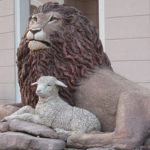How large is your church?
For many years, the primary way of measuring church size was to look at church membership. In Baptist churches, we began to track Sunday school attendance as a measuring stick. Membership numbers are not really helpful, since Baptists are not very good about adjusting our rolls over the years. Some denominations do better about that than Baptists. Total membership numbers tend to be very inflated for churches that have been around for a number of years.
Instead of membership numbers, tracking attendance is the best way to know the size of a church. In addition to counting Sunday school attendance, churches now often count worship attendance. Usually, worship attendance is a head count, rather than a posting of attendance by individuals.
So, how large is your church?
In recent years, we have observed that even our most faithful members are attending worship and Bible study on Sundays less than they did a few years ago. Opportunities pull our people in different directions on the weekends. Very regular attenders who used to make three out of four Sundays a month may now feel good about being present for two Sundays a month.
This new attendance trend obviously affects average attendance, however you are counting it. A congregation of 1,000 people who come three out of four Sundays a month averages 750. A congregation of the same number who come two Sundays a month averages 500 in attendance.
Another attendance trend is happening as well.
Opportunities to count
People connect to the life of the church in other ways than just Sunday school and worship. In fact, it is common for churches to offer various opportunities throughout the week that enable people to experience spiritual growth, enter into prayer and have Christian fellowship in a community of faith.
Sign up for our weekly edition and get all our headlines in your inbox on Thursdays
Sunday morning is not the only time this occurs. A Tuesday night young adult group or a Thursday morning Bible study are ways to connect people to spiritual growth through the ministry of the church. But these groups may not be counted in our traditional ways.
We need a new way to measure the lives that are being touched through the ministry of our churches.
To address these new attendance realities, some churches have now introduced a new way of counting. Various names are used, but let me give an example called TouchPoints.
Each quarter, a church will track the total number of people who have attended Sunday school and various other groups where attendance is taken and where spiritual growth, prayer and fellowship occur. Attendance is taken throughout the week in addition to Sunday mornings. (Worship is not included in TouchPoints, since most churches do not keep track of individual names in their worship attendance numbers.)
Measure absolute, total participation
Instead of just concentrating on average attendance, this gives us a way to measure the total number of people who have been touched over the last three months through the ministry of the church. People are just counted once, even if they were present every week and involved with several different groups.
Churches that track these numbers should not be surprised to find their TouchPoints number of total people in a quarter will be more that 50 percent higher than their Bible study average attendance for that same quarter. Churches can continue to track these numbers quarter by quarter. In the second year of measurement, you can see if you are touching more people than in the same quarter of the previous year. Perhaps that will be a metric for a church to utilize, even in a day when average attendance may be declining.
Church leaders may not have much impact on college football home games or lake homes or traveling soccer, baseball and volleyball schedules, but we can give our best efforts to make sure that we are reaching out to as many new folks as possible to touch their lives with the love of Jesus. TouchPoints is one way to keep track of this outreach as we determine if new people are being connected into the life of the church.
The Sunday school director in my first pastorate taught me an important lesson. He asked me one day, “When Jesus told his parable about the lost sheep, how did the shepherd know that one sheep was missing? Out of 100 sheep, how did he know that one was astray?” He answered his own question, “Because he counted.” It is hard to look at 100 sheep and know that one is missing unless we count.
Numbers do matter, because people matter! Healthy churches find the best way to count.
So, how large is your church? How are you counting?
David Hull is the southeast coordinator and a consultant with the Center for Healthy Churches.














We seek to connect God’s story and God’s people around the world. To learn more about God’s story, click here.
Send comments and feedback to Eric Black, our editor. For comments to be published, please specify “letter to the editor.” Maximum length for publication is 300 words.